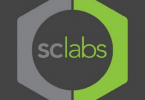PsyTech provides a growing community for psychedelic innovation to renovate the minds of humankind.
As revolutionizing times continue to sweep across the globe, disease, post-traumatic stress disorder (PTSD), depression, anxiety, and addiction, and poverty, racism, politics, fake news, war, and terrorism cast a foreboding light on Earth’s future. We need to desperately grasp hold of medicinal lifelines that facilitate transformational change. And fast. The promise that the mushrooming realm of psychedelics offers is too timely and too validated to disregard any longer. Luckily, the conversation is only getting louder and occurs with amplifying reverberance.
Psychedelics can refer to many different botanicals, such as cacti, mushrooms, or ayahuasca. Or, they can confer individual molecules like ketamine, lysergic acid diethylamide (LSD), or 3,4-methylenedioxy-methamphetamine (MDMA). Some 40,000+ people have been dosed with LSD and evaluated in a clinical setting, which is no small body of research. [1] These individual molecules are easier to study compared to the panoply of ingredients defining the plants themselves and are necessary to pinpoint specific therapeutic benefits.
Esketamine (the left isomer of ketamine), for example, was recently approved for treating treatment-resistant depression. Johnson & Johnson patented esketamine but there’s speculation that the right-isomer might hold even more promise. [2] Drug-design scientists must be cognizant of these isomers, called enantiomers, when synthesizing drugs in a lab. Enantiomers are mirror images of each other, like our left and right hands. Each molecular “hand” might contain very different properties. One hand, for example, might introduce mostly negative side effects. Thus, it’s important to understand how each enantiomer will affect patients and how these effects compare to the natural molecule where possible.
Recently, I spoke with Saul Kaye, Ronnie Eshel, and Hayim Raclaw, the tribunal behind PsyTech, an Israeli company born out of iCAN. Under the iCAN umbrella is CannaTech, a global cannabis summit that focuses on cannabis innovation; iCAN Serve, an R&D arm that helps businesses with services and consulting; and iCAN Incubate, a platform that “identifies and accelerates innovative startups and creates synergies between them and the global cannabis ecosystem.”
“The idea was to apply the CannaTech formula to psychedelics,” Raclaw explained. Raclaw previously managed the iCAN incubator but leapt at the opportunity to take the helm of PsyTech. “We identified the same type of opportunity that cannabis had five years back,” Raclaw continued. “There really wasn’t a space for multidisciplinary thought leaders and decision makers to come together and move the industry.”
PsyTech seeks the collaboration of clinical, scientific, and public policy professionals to scythe the path to not only the legalization of psychedelic substances, but also, our understanding of specifically what these plants and molecules can do. “We needed the ecosystem,” Raclaw added. “We had a large network of contacts, but the question was how can we use this network to develop the space? So, PsyTech was formed.”
While cannabis legalization may have paved some of the previously dirt road to psychedelic destigmafication and legalization efforts, they are not necessarily parallel paths. “The cannabis revolution was a people’s revolution,” Raclaw commented. “There was a groundswell of recreational and wellness users that drove legalization. Then, limited research began. The difference between cannabis and psychedelic paths is that the huge popular interest and policy evolution has been driven by compelling clinical data out of respected institutions like Johns Hopkins University and New York University.”
The launch of PsyTech was well-received in funding and attendance. And why shouldn’t it be? Psilocybin had already been granted “breakthrough drug” status by the U.S. Food and Drug Administration (FDA), enabling the Usona Institute to evaluate the compound in treating major depressive disorder (MDD), or clinical depression. MDD can include symptoms like sadness, tearfulness, emptiness or hopelessness; angry outbursts, irritability or frustration; loss of interest or pleasure in normal activities; feelings of worthlessness; and recurring thoughts of death.
But there’s an opportune wealth of historic scientific investigation into the use of psychedelics for treating depression, including during the 1940s through the 1960s [3], prior to governmental strong-arming and the labeling of psilocybin and LSD as Schedule I drugs, devoid of medicinal value. The psychiatric community, however, isn’t seeing envisioned outcomes with traditional tactics and unscheduled pharmaceuticals, so the need to squash outdated modes of thinking is nigh.
There have been efforts to reschedule psilocybin to Schedule IV classification, a level containing drugs like Ambien®, Xanax®, and Soma®. These legal drugs are claimed (by Schedule IV) to have “low potential for abuse and low risk of dependence” despite accounts of weird side effects and addictive tendencies. Ambien, for example, has been shown to cause sleep-driving. Some people have committed murder while on the drug and claim to have no recollection of the event. Users of Soma can overdose, which may result in a coma. A Center for Disease Control tally lists 6,209 deaths from Xanax in 2016, up from 4,801 in 2015.
The science of psychedelics heralds a different way of life. Mainstream media has embraced the coverage of rediscovered therapies. Books have been written. “It’s almost like the unearthing of an ancient buried city,” Raclaw said. “There’s been a massive push on social media around psychedelics that’s driven by personal patient stories and experiences.”
And so, PsyTech has visualized a 40,000-foot view on the emerging psychedelic industry such that it can act on innovative prospects, including new technology and investment opportunities, and supply a forum for the ecosystem to evolve.
“This is so exciting,” Kaye added, “because there are massive problems with mental health issues that are not being treated. PTSD is a $66,000,000,000 annual problem for treating veterans in need. There will be a massive spike from coronavirus. We need to move quickly.”
“The main thing,” he continued, “is to get into a state for which transformational change can occur. Psychedelics allow the state to happen. Then a guide facilitates the therapy.”
Like cannabis and the ensemble effect, there are obvious questions regarding whether an isolated active product ingredient or the full suite of phytochemicals are more effective. PsyTech believes that the answer will result in two different markets – so-called “full-spectrum” and single molecule. To answer these types of questions and advance our understanding of these molecules, PsyTech is planning a summit on June 14-15, 2020. They have a back-up date in case coronavirus halts social gatherings even longer. In addition, they will be launching PsyTech Online, a virtual conference.
The need for something that works in treating PTSD, depression, and a host of other mental health conditions is dire. We need to heal as a society and move forward as healthier, happier, and more productive Earthlings. Psychedelics may very well be the answer that we’ve been waiting for, that was available all along, forgotten about, rejected, stigmatized without logic or reason.
It’s fortuitous that people like Saul, Ronnie, and Hayim have recognized the need for catalyzing the acceptance of psychedelic medicine such that we no longer must trouble ourselves over absurd taboos. Once that bridge has been crossed and imploded, we can brainstorm on how to best implement these much-needed substances.
“We need quick adoption in the social space,” Kaye concluded. “I think we’ll see adaptogenic clinics and stores rapidly opening. The widespread availability of mushrooms in places like Amsterdam and the early trend driven by Canada, California, Oregon, and Colorado, coupled with the clinical R&D are causing rapid acceptance.”
“These substances will likely migrate through the FDA very quickly, which in their terms is about seven years,” Eshel added. “But state activity will make psychedelics available prior.”
“I’m hopeful because of the mounting need of these powerful molecules,” Raclaw said. “The normal pathways to access psychedelics will be accelerated. Today, no one feels that we are grappling with mental health issues in as productive a manner as we need to.”
When something is broken but mendable, it’s unnatural to discard it onto the steaming heap as just another piece of detritus. Humankind has suffered innumerable traumas that must be rapidly repaired or renovated. Senseless governmental regulations must be challenged with data, anecdotal or clinical. The trajectory that we’re on needs harnessed from spiraling too far out of control. Psychedelics may very well provide a ring of skeleton keys that help free humankind from the shackles of mental sickness.
References
- Grinspoon, L. and Bakalar, J. Psychedelic Drugs Reconsidered, Basic Books, New York, 1979.
- Yang, C. et al. “R-Ketamine: A Rapid-Onset and Sustained Antidepressant without Psychotomimetic Side Effects.” Transl Psychiatry, vol.5, no.e632, 2015, doi:10.1038/tp.2015.136. [journal impact factor = 5.182; times cited 146 (SemanticScholar)]
- Cole, J. and Katz, M. “The Psychotomimetic Drugs: An Overview.” JAMA, vol.187, no.10, 1964, pp. 758-761. [journal impact factor = 51.273; times cited 24 (ResearchGate)]








